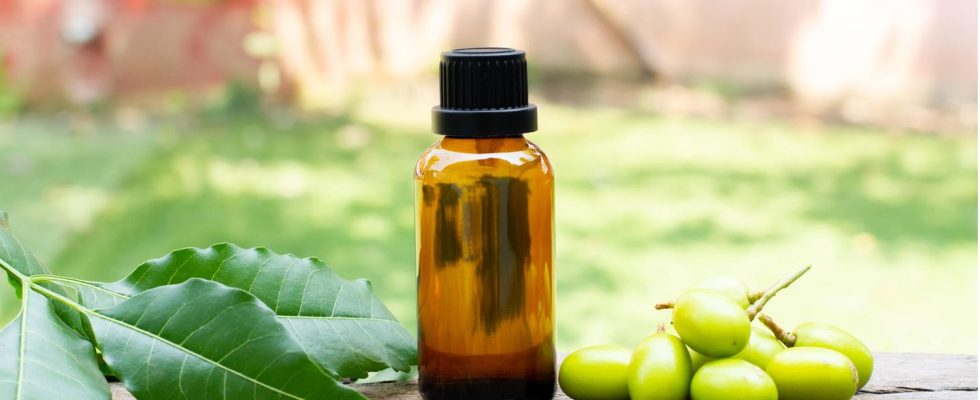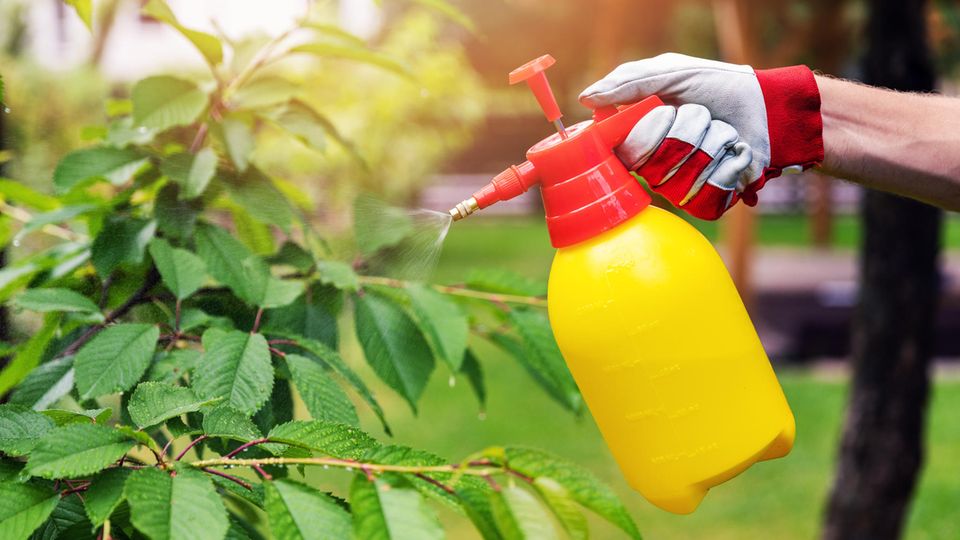crop protection
How to fight plant pests and fungal diseases naturally with neem oil
Good against sucking insects as well as fungal infestation and snails: neem oil
© Ninetechno / Getty Images
Sucking insects, snails and fungal infestation have a major impact on the number of plants in the garden. But instead of swinging the chemical club, there are ecologically more valuable and effective methods to combat uninvited guests – for example the use of neem oil. Application tips.
The neem tree from India is the namesake of the purely vegetable neem oil (also known as neem oil), which is obtained from the seeds of stone fruits. The ecological agent contains a kind of bitter substance (azadirachtin), which is intended to make useful and ornamental plants inedible for biting and sucking pests such as beetles, caterpillars, lice or spider mites. But fungal diseases such as mildew and snails should also be combated with neem oil. And the best thing about it is that regular use does not endanger beneficial insects such as bees or ladybugs. The only question left is how to use neem oil correctly? We’ll tell you.
Plant protection: How to use neem oil correctly
Through the application of neem oil An anti-feeding effect is to be achieved on useful and ornamental plants – it is also said that the active ingredients contained therein inhibit the development of new larvae. Before using it, however, you should know how to dose the ecological pesticide correctly. Just a few drops mixed with water are enough. Unless you choose one ready-to-use mixture for spraying. There are also two different ways to apply neem oil: either you spray it using a hand syringe directly on the leaves of the affected plants or you can add the oil to the irrigation water. Then the plants absorb the remedy through the roots and are strengthened from within.
The neem oil (diluted with water) is sprayed directly onto the affected plants
© ronstik / Getty Images
Before use, you should note the following points.
- Treat the affected plants early in the morning by spraying all affected areas with the diluted neem oil. This method increases the likelihood that all pests will come into contact with the crop protection product throughout the day.
- Apply the diluted neem oil Do not apply on rainy days, otherwise it will be washed off quickly and will not be effective.
- It is also not recommended to use the neem oil on very sunny days. Otherwise, there is a risk that the moistened leaves will burn.
Note: You must then be patient for a few days before the beetles, caterpillars, lice or spider mites leave your plants.
One final tip: You can also use neem oil preventively or when your crops and ornamental plants are only slightly affected. In this case, you should mix the ecological pesticide into the irrigation water so that it can be absorbed by the roots.
Sources: Utopia, my beautiful garden
You might also be interested in:
This article contains so-called affiliate links. Further information are available here.



